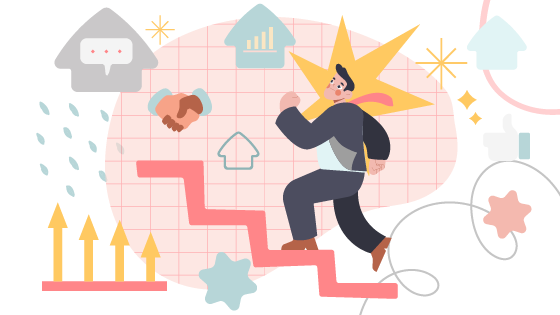Cave paintings are more than just pretty pictures. Our ancestors used stories as a way to pass information from generation to generation. Whether the message was genealogical in nature or just “Stay away from sharp teeth”, stories have had a way of capturing attention and relaying information that really sticks.
Centuries later, we’re still using stories to pass data from person to person. When you were a kid, Little Red Riding Hood taught you to stay out of dark forests and away from strangers. So while at work, a cautionary tale might serve you better than a how-to manual.
Understanding that the human brain is hardwired to listen to and interpret stories is part of our secret sauce. When it comes to storytelling, we don’t really need to reinvent the wheel; we just need to remind everyone why the original wheel was so great in the first place. Storytelling is the first form of passing information from person to person, and it has an importance and efficacy that shouldn’t be overlooked.
Writing the Script
Disney has a lock on creating a compelling story. Any kid can parrot back not only the plot points but also the moral to any of their favorite Disney or Pixar tales. That’s because scriptwriters need to create dramatic plots, but also connect those stories to emotions. Both kids and adults alike have emotional connections to those stories, whether it’s the tearjerker realization in The Lion King or the laughter that drives a movie like Finding Dory. The trick isn’t just to make viewers feel something, but to use that emotion as a recall for earlier points in the story.
Good digital learning should follow the same pattern. Are you getting learners to feel some connection between themselves in the material? Awesome. Are you using that emotion to increase retention and call back to the information throughout the module? Even better. When a learner feels something, again and again, he or she is more likely to convert the accompanying information from short-term to long-term memory.
If you’re looking to learn about learning and becoming a Chief Learning officer, download our free ebook here.
How They Feel
As Maya Angelou is famous for saying, “I’ve learned that people will forget what you said, people will forget what you did, but people will never forget how you made them feel.” That saying can be applied to your learners. Think about the last time you watched a TED Talk online. If you’re like most people, you won’t be able to remember all of the information shared, but you’ll remember a couple of interesting tidbits that you can share with friends. Why? It’s because those are the tidbits of information that actually made you feel something. Perhaps you connected due to a personal experience, or you perked up when you heard a funny remark. These emotional connections are what weaves together good storytelling and improve understanding.
As humans we love a good story; we always have. If you’re not incorporating that genetic predisposition of connecting information with a story, moral, and emotion, you could be working against some of your learners’ basest instincts. Drawing pictures on a cave might be so yesterday, but telling a story? That’s the future of digital learning.






